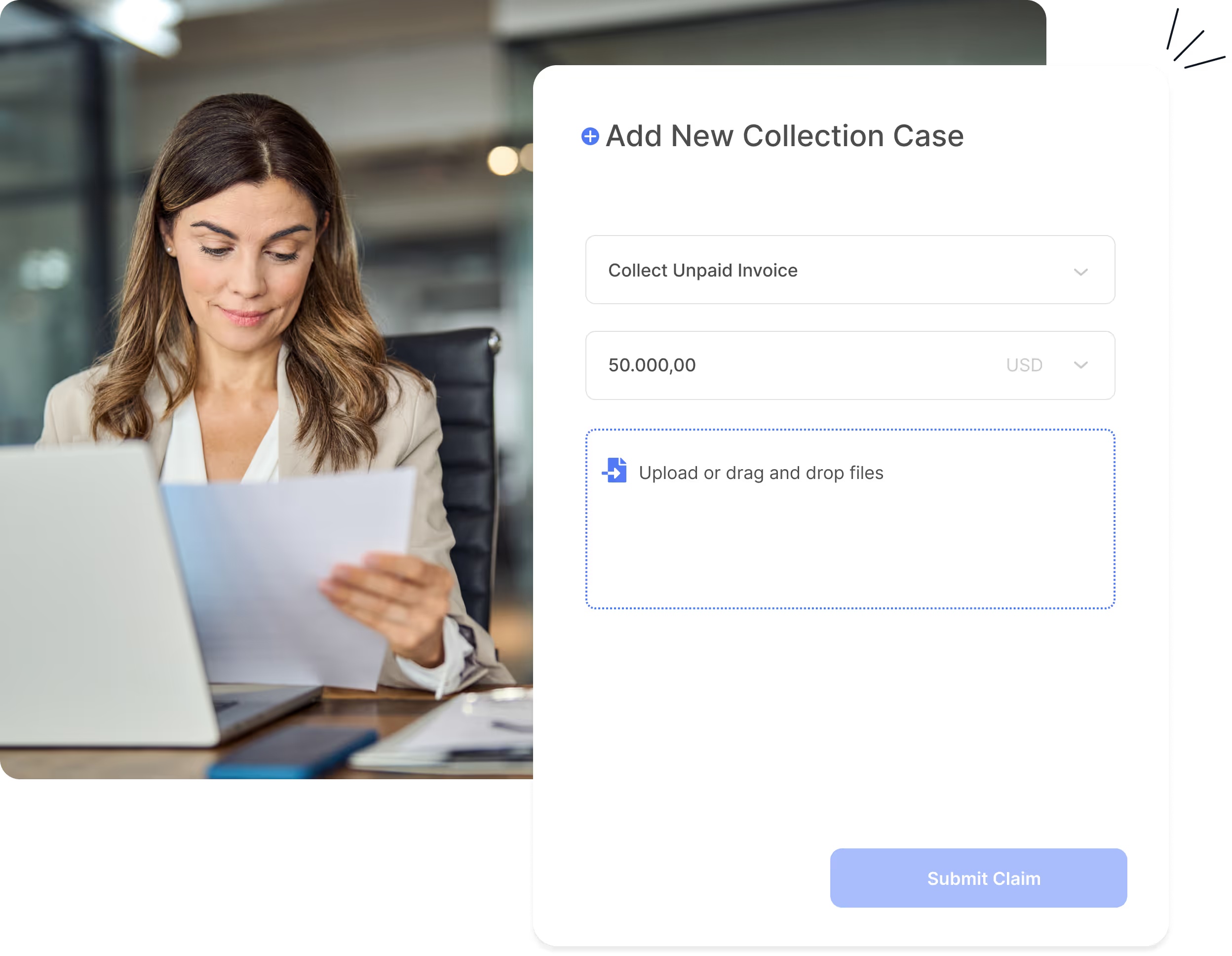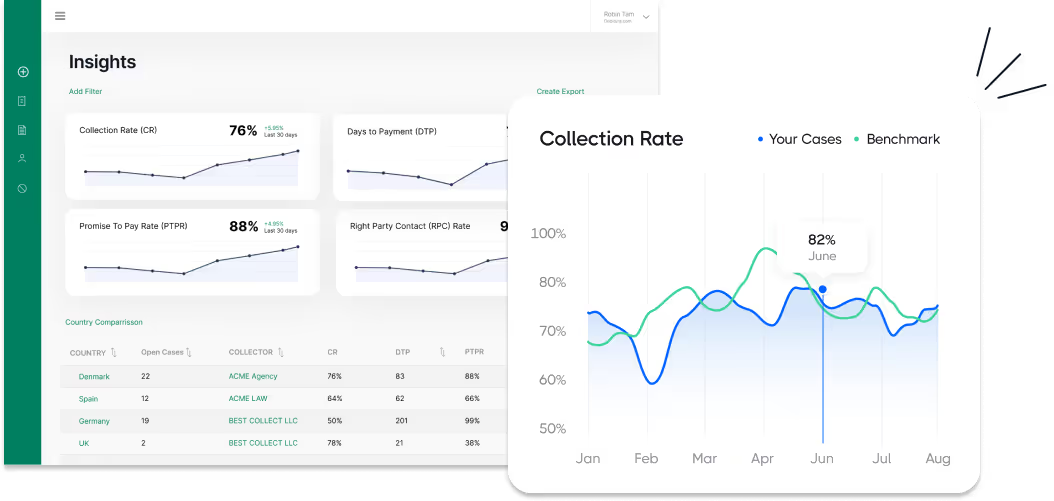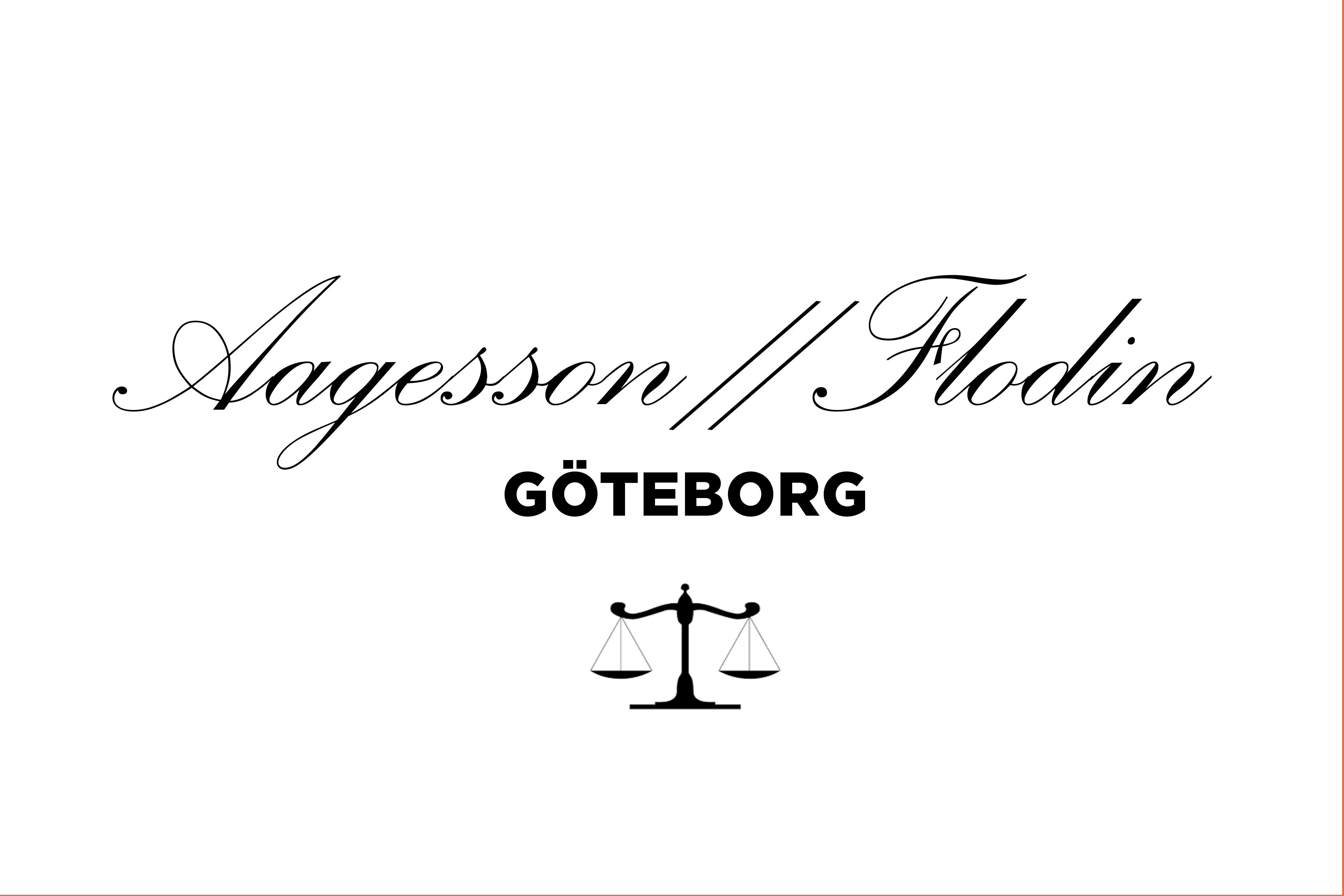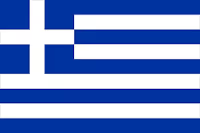Debt Collection Agency in Sweden
Your claim in Sweden is handled by Eurocredit AB, a licensed agency regulated by the Financial Supervisory Authority (Finansinspektionen). All actions follow Swedish law and happen locally, while you track progress in one dashboard. No upfront fees. Prefer to learn first? Read our Sweden debt collection guide.

Why Choose Debitura for Debt Collection in Sweden

Fast, Simple & Risk-Free Debt Collection in Sweden
Debitura is a global, tech-enabled collections platform working with locally licensed agencies and law firms in 183 countries. In Sweden, your case is handled by Eurocredit AB, a licensed debt collection agency regulated by Finansinspektionen under the Swedish Debt Collection Act.
- Risk-free pricing: No fees unless we succeed.
- Quick setup: Submit invoices in a few clicks.
- Real-time tracking: Live status, actions, and payments in one portal.
- Compliance: Actions follow the Inkassolag (1974:182) and GDPR requirements.

Start recovering your Swedish claims in 2 minutes
- Submit your claim: Upload unpaid invoices via the dashboard, REST API, or plug-and-play ERP integrations such as Fortnox and Visma eEkonomi.
- Local collection begins: We assign your case to Eurocredit AB, who contacts the debtor in Swedish within 24 hours. If court action is required, you choose 1–3 fixed-price legal quotes—for a Payment Order (Betalningsföreläggande) via the Enforcement Authority or a lawsuit—before anything proceeds.
- Get paid: Funds are remitted on recovery. If escalation is needed, only pre-approved, fixed-price legal steps move forward.


Transparent Pricing for Debt Collection in Sweden
With Debitura, you only pay when we succeed. In Sweden, fees are invoiced locally by Eurocredit AB in SEK, with any applicable VAT.
- No win, no fee: Pre-legal collection in Sweden is success-based—no setup or subscriptions.
- Local, transparent invoicing: Proceeds are remitted and the success fee is deducted by Eurocredit AB.
- No hidden charges: Same clear terms worldwide.
- Legal action is optional: You approve fixed-price quotes (e.g., payment order or lawsuit) before any spend, aligned with Swedish procedure.

Fast, Simple & Risk-Free Debt Collection in Sweden
Debitura is a global, tech-enabled collections platform working with locally licensed agencies and law firms in 183 countries. In Sweden, your case is handled by Eurocredit AB, a licensed debt collection agency regulated by Finansinspektionen under the Swedish Debt Collection Act.
- Risk-free pricing: No fees unless we succeed.
- Quick setup: Submit invoices in a few clicks.
- Real-time tracking: Live status, actions, and payments in one portal.
- Compliance: Actions follow the Inkassolag (1974:182) and GDPR requirements.
Debt Collection in Sweden – Your Complete 2025 Guide
Why you can trust this guide
At Debitura, we uphold the highest standards of impartiality and precision to bring you comprehensive guides on international debt collection. Our editorial team boasts over a decade of specialized experience in this domain.
Questions or feedback? Email us at contact@debitura.com — we update this guide based on your input.
Debitura By the Numbers:
- 10+ years focused on international debt collection
- 100+ local attorneys in our partner network
- $100M+ recovered for clients in the last 18 months
- 4.97/5 average rating from 600+ client reviews
Expert-led, locally validated
Written by Robin Tam (16 years in global B2B debt recovery). Every page is reviewed by top local attorneys to ensure legal accuracy and practical steps you can use.
Contributing local experts:
Last updated:
For in-house counsel, finance teams, and cross-border creditors, this Sweden guide covers 2025 debt recovery end-to-end—costs, timelines, limitation/interest, court routes, and enforcement via Kronofogden—plus step-by-step tools and compact tables to act correctly, fast.
What we will cover:
- Quick Overview
- Legal Framework
- Pre-legal / Amicable steps
- Legal Action
- Debt Enforcement
- Insolvency Procedures
- FAQ
Essential Facts for debt recovery in Sweden
This section gives you the must-knows for 2025: typical costs (statutory fees and when lawyer costs shift), realistic timelines from amicable steps to court and enforcement via Kronofogden, limitation periods and interest, and the core documents you should assemble first.
How much does debt collection cost in Sweden?
Pre-legal collection is often contingency-based; only capped debtor fees apply. Legal routes add fixed filing/enforcement fees and, if you win, cost-shifting (limited in small claims). Expect a 300 SEK payment-order fee and 600 SEK per year for enforcement via Kronofogden. (Kronofogden – fees)
How long does debt collection take in Sweden?
Amicable collection typically resolves in 4–8 weeks; many debts are paid within a month after an inkasso letter. Uncontested payment orders often conclude in ~4–6 weeks; contested cases in district court commonly take 6–12 months before judgment.
What are the limitation periods and interest rules in Sweden?
General limitation is 10 years; consumer claims from a business prescribe after 3 years unless interrupted (demand, acknowledgment, or legal filing), after which the period resets. Statutory default interest generally runs at Riksbank reference rate +8 percentage points (Preskriptionslag – Riksdag).
What documents do I need to collect a debt in Sweden?
Creditors should assemble the contract or order, invoice(s) and delivery/proof-of-service, account statement, pre-legal notices (reminders/inkasso), and any acknowledgments or part-payments. If represented, add a power of attorney and company register extract for authority.
Debt Collection Process in Sweden
How should creditors navigate Sweden’s process? Start amicable for undisputed claims; disputed claims belong in district court. Enforcement through the Swedish Enforcement Authority (Kronofogden) requires a legal title. For straightforward, uncontested debts, the Order for Payment (Betalningsföreläggande) can deliver a fast enforceable decision (Kronofogden – collecting a debt)
Is the claim disputed?
- Undisputed → use reminders, inkasso demand, payment plan; then escalate if unpaid.
- Disputed → file promptly in the competent district court or expect transfer from payment-order procedure. Don’t linger in amicable.
What is a legal title in Sweden?
- Qualifies: court judgment, Kronofogden default order (utslag); consent judgment if settled.
- Not a title: signed acknowledgment/part-payment—strong evidence, not directly enforceable.
- Why it matters: Kronofogden can enforce only on an enforceable title.
Who Does What in Sweden Debt Collection?
Agencies manage amicable recovery, lawyers handle court proceedings, and the Swedish Enforcement Authority (Kronofogden) executes judgments. Choose the actor by dispute status and stage. Enforcement generally requires a legal title (judgment or Kronofogden order). See roles, capabilities, and compliance guardrails below.
Debt Collection Agencies in Sweden (inkassobolag)
- Best for: Undisputed B2B/B2C debts; early-stage follow-up.
- What they do: Reminders, inkasso demand, payment plans, skip-tracing.
- Compliance: Must follow “good collection practice” under the Debt Recovery Act; supervised licensing regime applies to third-party collectors. Inkassolag (1974:182)
- Typical fees / terms: Creditor pays contingency or fixed fees; debtor fees capped (e.g., 60 SEK reminder, 180 SEK inkasso).
- Escalate when: No payment after demand / plan; dispute raised; assets or urgency require title.
Debt-Collection Lawyers in Sweden
- Best for: disputed claims, complex B2B, high value/appeals.
- What they do: file/run court cases; seek judgments or consent orders.
- Compliance: court rules and ethics; small-claims cost recovery capped.
- Typical fees / terms: hourly/fixed; loser-pays in ordinary cases.
- Engage when: defence/counterclaim, jurisdiction issues, urgent injunctions.
Swedish Enforcement Authority (Kronofogden)
- Best for: uncontested claims via Order for Payment; enforcing titles.
- What they do: default orders (utslag); attach wages, bank funds, assets. [Kronofogden]
- Compliance: act on application; enforce only with an enforceable title.
- Typical fees / terms: 300 SEK filing; 600 SEK/year enforcement.
- Instruct when: debt undisputed or title obtained and assets located.
Which laws and courts apply to debt collection in Sweden?
In Sweden, small claims (simplified cases) go to the District Court’s small-claims track (≤ SEK 29,400); larger claims use ordinary District Court procedure under the Code of Judicial Procedure (Rättegångsbalk). Conduct and enforcement follow the Enforcement Code (Utsökningsbalk). Creditors must choose the competent forum and keep communications compliant.
Civil court system in Sweden
- Use when: Selecting forum & appeals path.
- Levels: Small-claims track (District Court) ≤ SEK 29,400; ordinary District Court above; appeals to Court of Appeal; further leave to Supreme Court.
- Filing basics: Follow the Code of Judicial Procedure for pleadings, service, deadlines.
- Service: Local service rules; cross-border per EU instruments (e.g., Service Regulation) where applicable.
- Outcome: Judgment/order → enables enforcement by Kronofogden.
- Creditor must: File in the competent court; observe limitation and appeal time limits.
Key legislation in Sweden
- Obligations/interest: Interest Act sets default interest (reference rate +8).
- Procedure: Code of Judicial Procedure governs civil litigation steps and cost rules.
- Enforcement: Enforcement Code governs seizure, exemptions, priority; Kronofogden executes.
- Collections conduct: Debt Recovery Act requires “good collection practice”; capped debtor fees.
- Insolvency: Bankruptcy Act and Debt Restructuring Act affect stays/priority and discharge.
- Practical effect: Defines default/interest, recoverable costs, filing steps, writs/bailiff powers, stay/priority.
- Recognition: EU Brussels I Recast for most civil/commercial judgments; EU small-claims/payment-order tools also available.
- Creditor must: Cite the correct rule/article in filings; attach clear evidence.
Consumer & data protection in Sweden
- Applies to: Pre-legal outreach and case handling (B2C especially).
- You must: Follow GDPR-aligned principles—lawful basis, minimisation, security; respect IMY guidance.
- You should not: Harass, mislead, or disclose excessive data; follow “good collection practice.”
- Comms basics: Accurate amounts, clear deadlines, correct interest/fees; honour opt-out where offered.
- Special rules: For consumer credit data and credit reporting, follow the Credit Information Act and sector guidance.
- Creditor must: Retain evidence proportionately; set retention limits consistent with purpose.
How does amicable (pre-legal) debt collection work in Sweden?
Amicable recovery is the non-court route: reminders, a formal inkasso demand, and negotiation. The creditor should secure full payment or a written acknowledgment with an instalment plan. Use multi-channel outreach, clear deadlines, compliant demand letters, and keep records to interrupt limitation and support any later filing.
- Case criteria: Undisputed and not time-barred.
- Statute of limitations: General 10 years; consumer B2C 3 years; interruption resets the period (demand, acknowledgment, or legal filing).
- Goal: Full payment or signed acknowledgment + instalment plan.
- Typical timeframe: ~4–8 weeks from reminder to decision to escalate.
- Key actors involved: Creditor or licensed collection agency (inkassobolag).
- Typical cost for the creditor: Often no-cure-no-pay; agency keeps capped debtor fees and/or a success commission.
- Typical cost for the debtor: Statutory interest (reference rate +8 pp) and capped fees (e.g., reminder 60 SEK; inkasso 180 SEK; instalment setup 170 SEK).
- Escalate when: Final deadline missed, dispute raised, limitation risk, or suspected asset dissipation.
Amicable Collection Timeline (Day 0–90)
Follow this cadence; adjust deadlines to your policy and case facts.
What costs apply in the amicable phase?
Debtors typically owe statutory interest and capped admin/collection fees; many agencies work on a no-cure-no-pay basis (success fee taken from recoveries). Se the Act on collection-cost compensation.
When to Escalate to Court in Sweden
- Escalation triggers: Missed final demand, dispute raised, limitation risk, suspected asset transfer.
- Prepare next: Contract, invoices, proof of delivery, correspondence, statement of account, interest/costs calculation.
- Hand-off: Agency/creditor passes a complete file to counsel for court steps or files Order for Payment (Kronofogden) if still undisputed.
Use the Courts to Obtain an Enforceable Title in Sweden
When should a creditor take legal action in Sweden? Go to court when a claim is disputed or pre-legal steps fail. The goal is a legal title (judgment/order) that extends limitation and enables enforcement by Kronofogden. Procedure follows the Code of Judicial Procedure (Rättegångsbalk); uncontested debts can use Kronofogden’s Order for Payment.
- Goal: Obtain enforceable judgment/order (legal title).
- Typical timeframe: Uncontested title ~4–6 weeks; contested case ~6–12 months.
- Key actors involved: District Court (tingsrätt), Kronofogden, parties’ counsel.
- Typical cost for the creditor: Filing + representation; small-claims recovery of counsel time capped.
- Typical cost for the debtor: Principal, default interest, court fee, and court-awarded costs if they lose.
- Result: Title pauses/resets limitation and is directly enforceable by Kronofogden.
The Cost of Legal Action in Sweden
- You pay initially: Court filing, representation, service/translation (if needed).
- Recoverability: Loser-pays in ordinary cases; capped counsel recovery in small-claims.
- Debtor exposure: Principal + statutory/contract interest + court-awarded costs if they lose.
Determining the Appropriate Court in Sweden
- Small-claims forum: District Court (simplified civil case) ≤ SEK 29,400.
- Ordinary court: District Court above that; appeals to the Court of Appeal (leave required), then Supreme Court (leave).
- Competence factors: Claim value, subject matter, defendant’s domicile/venue clause.
- Service rules: Domestic per Rättegångsbalk; cross-border via EU Service Regulation where applicable.
- Creditor must: File within limitation, attach evidence bundle, follow procedural deadlines.
Fast-Track Option in Sweden
- Name: Order for Payment (Betalningsföreläggande).
- Best for: Uncontested/simple monetary claims.
- What it does: Issues default order (utslag) unless the debtor objects.
- Key steps: Apply → serve → 10–14 day objection window → default order.
- Objection result: Case transfers to District Court as ordinary proceedings.
- Typical duration: ~4–6 weeks if uncontested.
- Filing basics: Use Kronofogden forms; pay application fee (see costs).
Learn more in our guide about small claims court in Sweden here
Ordinary Proceedings in Sweeden
- Best for: Disputed/complex/high-value claims.
- Key steps: Summons application → defense → evidence exchange → main hearing → judgment.
- Evidence focus: Contract, invoices, delivery proof, correspondence, statement of account.
- Typical duration: ~6–12 months to judgment in straightforward cases.
- Outcome: Judgment/title; appeal path under Rättegångsbalk.
- Cost shifting: Loser-pays in ordinary cases; capped recovery in small-claims.
How does debt enforcement work in Sweden?
A creditor may enforce only with a legal title (judgment/order). Enforcement is conducted by the Swedish Enforcement Authority (Kronofogden) using measures such as seizure (utmätning), bank attachment, and wage garnishment. Creditors should select proportionate remedies based on visible assets and follow the Enforcement Code.
- Goal: Recover sums via court-authorized measures using a valid title.
- Actors: Kronofogden, creditor, debtor, sometimes banks/employers and other third parties.
- Prerequisite: Legal title required; ensure proper service and within time limits.
- Typical timeframe: Weeks to months; asset availability drives speed.
- Costs: Statutory enforcement fees; creditor pays initially; added to debt if recovery occurs.
- Limits: Exempt items and protected income bands under the Enforcement Code.
Ways to Enforce a Claim in Sweden
- Seizure of movables: Instruct Kronofogden to inventory, seize, and auction property under seizure (utmätning).
- Bank account attachment: Apply to attach funds; banks freeze/transfer after notice from Kronofogden.
- Wage garnishment: Kronofogden issues an attachment of earnings decision; protected income rules apply.
- Real-property measures: Attach property and force sale; note land-register entries as required.
- Third-party debt order: Redirect receivables from customers/platforms where permissible.
- Information measures: Use debtor information orders and register searches to locate assets.
- Voluntary compliance tools: Payment plans or consent orders to avoid intrusive actions.
The Debt Enforcement Process in Sweden
- Check readiness: Title valid; interest/costs updated; debtor identifiers confirmed.
- Choose remedy: Match assets to tool (bank, wages, movables, property, receivables).
- File & serve: Submit enforcement application to Kronofogden; pay the enforcement fee; ensure service.
- Execution phase: Kronofogden conducts attachment/seizure; third parties must comply.
- Proceeds & accounting: Sale/transfer; proceeds applied to principal, interest, and costs; surplus returned per rules.
- If empty-handed: Request information measures/examination; retry when new intel emerges or assess insolvency.
- Closure/monitoring: Keep the title alive (generally 10-year enforceability, interruptible); calendar re-attempts.
How do insolvency procedures affect debt recovery in Sweden?
When bankruptcy or company restructuring opens, individual enforcement is generally stayed under the Bankruptcy Act (1987:672) or the Company Restructuring Act (2022:964). Creditors must file a proof of claim by the court-set bar date to share in distributions. Outcomes depend on liquidation vs restructuring and the statutory priority order (Bankruptcy Act (1987:672).
- Goal: Maximise recovery through a collective, court-supervised process.
- Typical timeframe: Months to years; depends on estate size and complexity.
- Key actors involved: District Court, court-appointed administrator/trustee, creditors’ meeting/committee.
- Typical cost for the creditor: Filing/translation where needed; legal counsel for claims and objections.
- Typical cost for the debtor: Estate administration and procedural costs paid from the estate.
- Effect on enforcement: Individual actions paused; creditors must file in the estate’s procedure and await distributions.
Types of Insolvency & Likely Outcomes in Sweden
- Liquidation / bankruptcy: Bankruptcy—assets realised and distributed by statutory priority; unsecured dividends are often low.
- Reorganisation / restructuring: Company restructuring—court-approved plan with negotiated repayments; executory contracts may be adjusted - see Company Restructuring Act (2022:964)
- Pre-pack / scheme: Available via restructuring plan tools to fast-track compromises with creditor voting thresholds.
- Personal vs corporate: Corporate uses bankruptcy/restructuring; individuals may seek statutory debt relief under the Debt Restructuring Act.
- Cross-border recognition: EU Insolvency Regulation applies to most cross-border EU cases (COMI/establishment rules).
- Discharge timeline / non-dischargeable debts: Discharge depends on proceeding type; certain public-law claims may survive outside approved plans.
The Insolvency Process for Creditors in Sweden
- Detect & verify: Identify proceeding type; note court, case number, and administrator/trustee.
- Stop individual action: Observe the statutory stay; suspend ongoing enforcement and filings.
- File proof of claim: Use the court/administrator form; attach contract, invoices, statement of account, and interest/costs calculation; meet the court-set bar date.
- Attend/monitor meetings: Join the creditors’ meeting; participate in any committee; vote on plan/liquidation steps where applicable.
- Challenge if needed: Object to rankings, preferences, set-offs according to the Bankruptcy Act procedures.
- Track distributions: Dividends paid according to the Priority Rights framework; expect periodic reports before distributions.
- After closure: Judgment titles generally remain enforceable for around 10 years (interruptible); calendar future checks if the debtor’s position improves.
Find a Local Debt Collection Lawyer
Need court-ready representation? Share your case once and receive up to three proposals from vetted litigation attorneys—free, fast, and with no commitment.
- Verified specialists
- Quotes in 24 h, no hidden fees
- Fair, pre-negotiated rates

Aagesson & Flodin AB is a premier law firm in Göteborg offering effective Debt Collection services in Sweden, established in 2011 and renowned for its expertise in judicial processes, serving both private clients and companies with personalized legal solutions.

Advokatfirman Montgomery AB is a premier law firm in Stockholm offering effective Debt Collection services in Sweden, established in 2000, operating under a no-win-no-fee model, and serving Sweden and other Scandinavian countries as a trusted member of the Swedish Bar Association.

Eurocredit AB is a premier debt recovery agency in Sweden offering effective risk-free debt collection services, established in 1988, serving Sweden and Norway with a No Cure No Pay model, and is an exclusive Debitura partner, adhering to Debitura's risk-free standard terms and pricing.





.svg)

.webp)
.png)

.png)
.svg)












.webp)